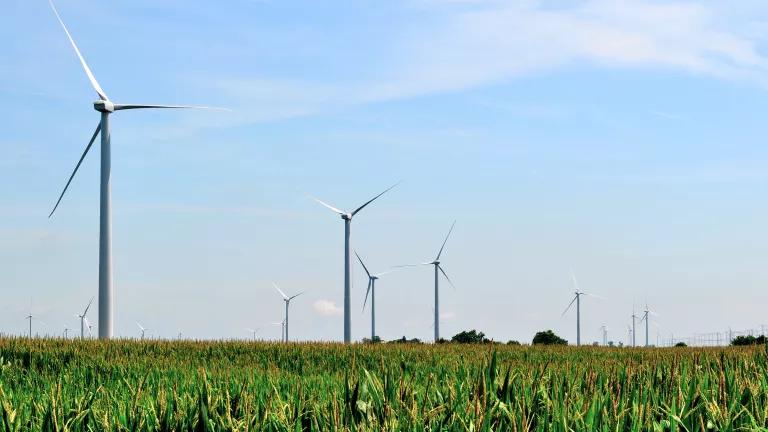
When it comes to supporting renewables, blue and red make green.
Among a dwindling number of politicians at the national level, there’s a pretend debate going on. Using all the scare tactics and rhetorical tricks they can muster, some apologists for the fossil fuel status quo would have you believe that we, as a nation, are divided about whether or not to move forward aggressively with clean, renewable energy like wind and solar.
But the simple truth is that there is no debate: The national verdict on renewables is already in. However they may have voted in the presidential election, Americans—of all political stripes, in red states and blue ones—are overwhelmingly voting yes on clean energy. Whether it’s because it’s good for the economy, the environment, consumers, or all three, citizens and their elected officials at the state level are throwing their full support behind the next energy revolution.
For evidence of clean energy’s bipartisan and cross-cultural appeal, one need look no further than the American heartland—the same part of the country that gave Donald Trump his victory—where governors, legislatures, and voters have come to see investment in renewables as something to be embraced wholeheartedly and unequivocally. In the weeks just after the election, while many of us were nervously wondering what our national energy policy would look like under a President Trump and a Secretary of Energy Rick Perry, three of these states undertook significant measures to protect, or even improve, their efficiency and renewable energy standards.
In Michigan last month, a legislative package that began its life as an attempt by some lawmakers to roll back the state’s clean energy goals ended up being transformed into a set of bills that not only preserves them, but actually makes them stronger. Just before Christmas—and after much bipartisan negotiating—Republican Governor Rick Snyder personally inserted himself into the debate and ultimately sealed the deal by putting his signature on laws that will increase Michigan’s renewable energy portfolio standard from 10 percent to 15 percent while simultaneously fostering greater efficiency.
In Illinois, Republican Governor Bruce Rauner recently signed the Future Energy Jobs Bill, passed by his state’s Democrat-controlled legislature and designed, among other things, to ensure that more than $200 million a year gets channeled into renewable energy investment. Under the new law, the state’s largest electric utility will also increase efficiency to reduce demand from customers by more than 20 percent by the year 2030. Both measures will greatly help Illinois reach its goal of getting a quarter of its energy from renewables by 2025.
Meanwhile, in Ohio, Governor John Kasich has just defied members of his own party by vetoing a bill that would have continued a deplorably cynical freeze on the state’s move toward renewable energy. In defending his veto, the Republican and 2016 presidential candidate cited the economic harm that would befall his state were it to abandon its sizable investments in the clean energy sector, which currently employs nearly 90,000 Ohioans.
Each of these happy developments represents another forceful refutation of all the shopworn clichés about clean energy: that it’s practically unfeasible, for instance, or that it’s somehow inimical to job growth, or that it’s something only tree huggers care about. More and more, these clichés are being revealed for what they are: desperate and outdated political posturing. Republicans in Washington, D.C., who stubbornly cling to them should take a lesson from their counterparts in heartland states—and not just the aforementioned ones, but also states like Texas and Iowa—and get with the program. If they don’t, they’re going to look even more out of touch with public sentiment than they already do.



